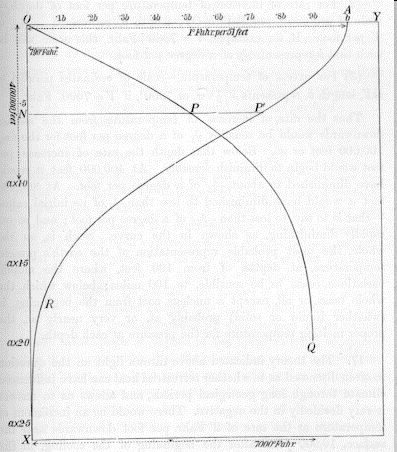Kelvin's age dating of the Earth
As already discussed in the lecture, Kelvin calculated the age of the Earth using "hard physical facts". In this notebook, we want to follow his thoughts and try to plot the graphs he drawed:

How did Kelvin calculate the age of the Earth? His "physical facts" were some "measurements":
Temperature at the Earth'core, hard to determine, Kelvin made some "educated guesses" 3870 C-5540 C based on some experiments with rocks. This is the initial temperature Kelvin used in his calculation.
Temperature gradient: 36.5 K km (from measurements in mines).
Thermal diffusivity: 1.2 10$^{-6}^{2}^{-1}$ (measured on three rock samples from the Edinburgh area...).
Kelvin used the analytical solution for the one dimensional heat trasport equation:
which is: Here, we assume that the surface is held constant a T=0 C, thus the original T becomes .
The gradient is:
Using this expression, try to calculate the age of the Earth according to Kelvin. You can vary the initial temperature, which is the temperature at the Earth's core (Kelvin's "educated guesses").
Now we want to take a look at the graphs showing the vertical temperature profile and the temperature gradient Write some code which produces a plot showing temperature versus depth, using the natural unit :
Use the time calculated before as input.